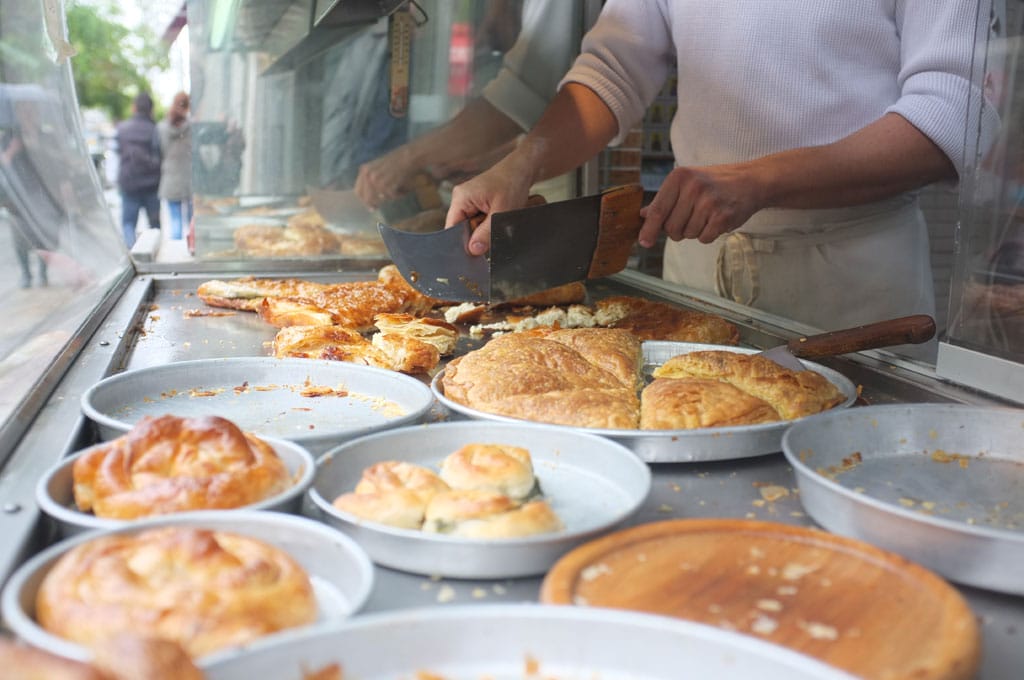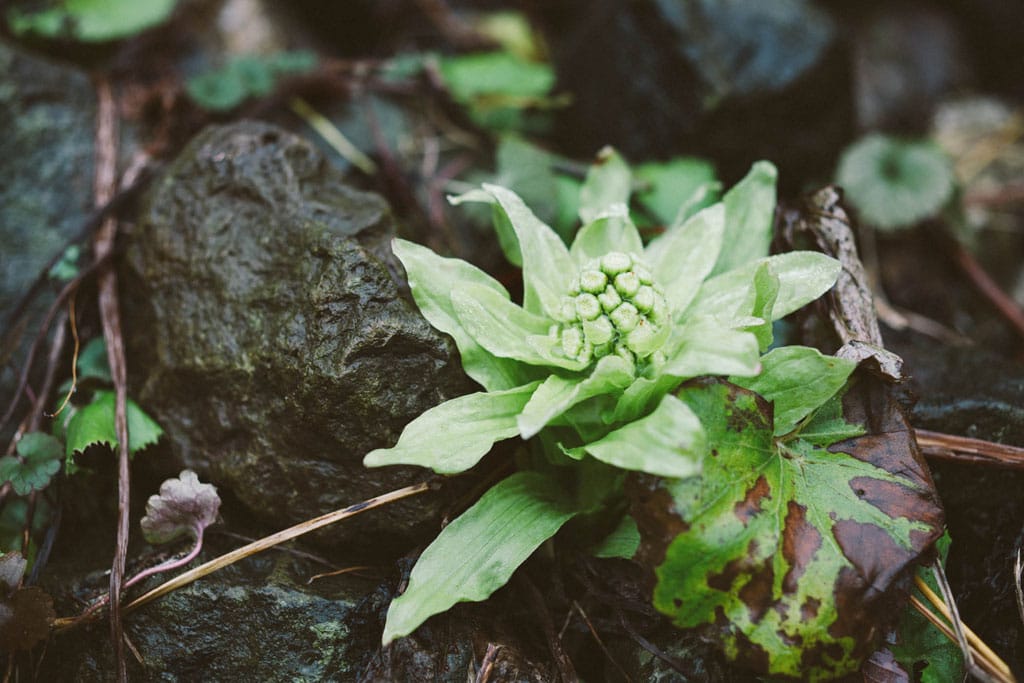Like so many other Greek specialties, bougatsa has a long history, in this case one that stretches all the way back to Byzantine times.
Bougatsa is mainly a breakfast pie with a phyllo pastry made of flour, softened butter and oil that requires a great deal of skill to prepare. This pie is made and enjoyed all around Greece, but particularly famous are those made in northern Greece, especially in Thessaloniki and Serres. Turkish börek is a close relation, and similar pies are traditional to many eastern Balkan countries that were formally part of the Ottoman Empire. The tradition of bougatsa making really took off around Greece in the early 1920s with the arrival of the Greek refugees from Asia Minor and Cappadocia, who brought with them centuries-old pie baking traditions.
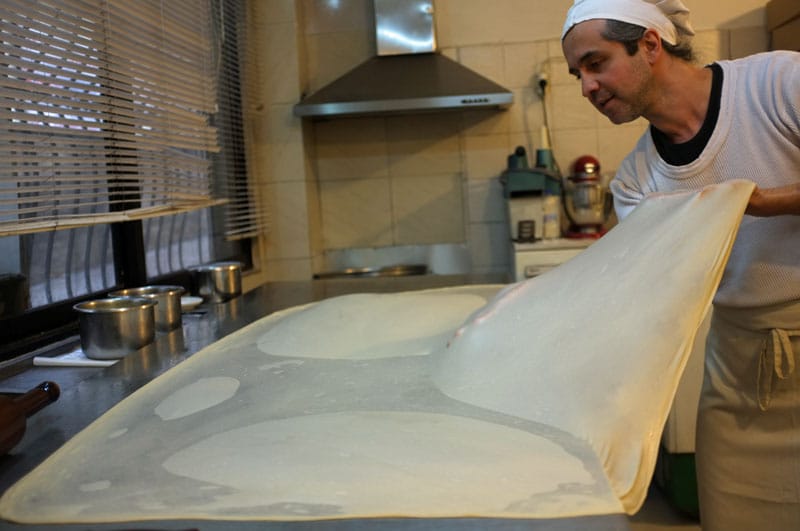
The northern Greek recipe calls for a larger pie, rather than individual portions, which is cut into pieces and sold by the kilo (one serving usually weighs about 160 grams). The traditional recipe can be savory, stuffed with cheese, or sweet, with a semolina custard, topped with cinnamon and powdered sugar. Phyllomeli (phyllo means “pastry,” meli means “honey”) is the old-school version loved by many, with plain layers of phyllo drenched with honey and sprinkled with cinnamon. Other common savory versions are stuffed with spinach, with spinach and cheese and with minced meat (usually a mix of beef and pork or beef and lamb). In Thessaloniki, chocolate custard is a popular sweet choice.
Walking in the streets of Thessaloniki, one cannot avoid the beguiling fragrance of freshly baked bougatsa that seems to come from every direction. It’s actually quite hard to find a bad version of this pie there, but there are a few that are head and shoulders above the rest.
Bantis is a traditional bougatsa workshop that has operated in the same location since 1969. Philippos Bantis, who now runs the place along with his wife and son, was taught the art of bougatsa making by his grandfather, who came to Thessaloniki from Kayseri in Cappadocia – an area known for its pie making since Ancient Greek times – after the population exchange between Greece and Turkey in the early 1920s. It was Bantis’s father, Dimitris, who opened the shop, and Bantis, after completing his studies as a pastry chef, took over. He makes delicious cheese bougatsa as well as all the other typical versions.
Serraikon is among the oldest bougatsa shops in town. The original shop, which is still located outside the central food market, Stoa Modiano, was opened in 1952 by Zacharias Pratsinakis. In the late 1990s his family expanded the business, opening several branches around the country.
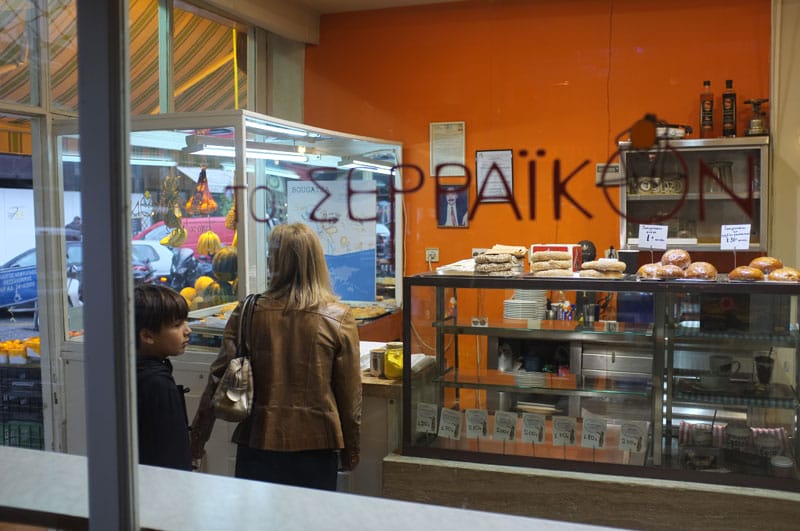
To Anoteron is another local favorite, with a secret family recipe that has been passed from generation to generation. The shop’s handmade bougatsa comes in three different fillings: cheese, spinach or semolina custard and cinnamon.
Yiannis is a legendary stop for the city’s late-night revelers. In the early hours of the morning, the little street where Yiannis’s workshop is located gets crowded with hungry, tipsy clients, who form long queues outside his shop. Among the bestsellers are the bougatsa with minced meat and yogurt and the version with semolina custard, covered with chocolate praline.
Estrella, which opened about three years ago, is an all-day cafe and a more sophisticated “street food” restaurant, well known for its Sunday brunch and the “bougatsan,” a hybrid of the croissant and bougatsa, of course. It’s essentially a croissant stuffed with the typical semolina custard and sprinkled with powdered sugar and cinnamon. They also offer alternative options – covered in chocolate praline, fresh berries or ice cream! – which just goes to show that even with a dish as ancient as bougatsa, there’s still room for innovation.
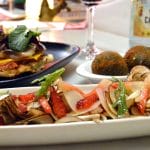 March 5, 2014 Bar del Pla
March 5, 2014 Bar del Pla
Making tapas is like playing the guitar. It's easy to sound pretty good if you strum […] Posted in Barcelona May 2, 2023 Spring Gone Wild
May 2, 2023 Spring Gone Wild
One of the great joys of spring in Japan is anticipating the appearance of sansai, or […] Posted in Tokyo February 1, 2013 Calçots: Not Your Average Onion
February 1, 2013 Calçots: Not Your Average Onion
As the legend goes, a 19th-century Catalan farmer was out experimenting in his fields […] Posted in Barcelona
Published on July 22, 2016
Related stories
March 5, 2014
BarcelonaMaking tapas is like playing the guitar. It's easy to sound pretty good if you strum away on three basic chords, but significantly harder once you start delving into the infinite possibilities of the instrument to get your own style. At Bar del Pla, the tune is a traditional Catalan and Spanish one, but imaginative…
May 2, 2023
TokyoOne of the great joys of spring in Japan is anticipating the appearance of sansai, or mountain vegetables. When cherry blossoms begin to flutter on warming breezes, hikers take to the hills to forage for the first wild edibles. Supermarkets mount special displays of packaged (and unfortunately often hot-house-raised) young sprouted leaves, shoots and tubers.…
February 1, 2013
BarcelonaAs the legend goes, a 19th-century Catalan farmer was out experimenting in his fields when he came up with a new kind of longer, juicier green onion, the calçot. In creating the onion, the farmer produced much more than a new vegetable; he also paved the way for the rise of an idiosyncratic, and distinctly…







































